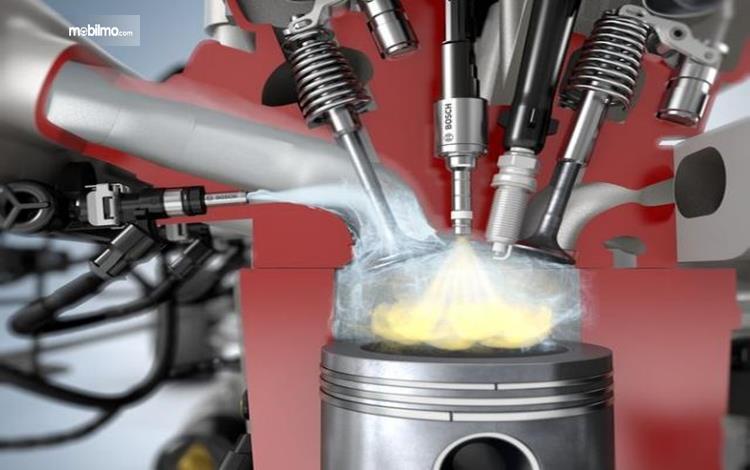Introduction
Blow-by, a common issue in gas engines, arises when combustion gases leak past the piston rings and into the crankcase. This can lead to a number of problems, including reduced engine power, increased oil consumption, and engine damage. Understanding the causes and potential solutions of blow-by is crucial for ensuring the longevity and performance of your engine.

Image: www.jagobengkel.com
Understanding Blow-By
In a properly functioning engine, the piston rings create a tight seal against the cylinder walls, preventing combustion gases from leaking into the crankcase. However, over time, due to wear, damage, or improper installation, these rings can lose their seal, allowing gases to escape.
Causes of Blow-By
There are several factors that can contribute to blow-by, including:
- Worn or Damaged Piston Rings: Rings can wear out naturally over time or be damaged due to improper installation, overheating, or combustion debris.
- Excessive Cylinder Wear: Worn cylinders can create gaps between the piston rings and the cylinder walls, allowing gases to leak through.
- Improper Ring Installation: Failure to correctly align, gap, or position the piston rings during engine assembly can result in excessive blow-by.
- Head Gasket Failure: A blown head gasket can create a path for combustion gases to enter the crankcase.
- Throttle Valve Issues: A stuck or malfunctioning throttle valve can cause excessive pressure to build up in the crankcase, leading to blow-by.
Consequences of Blow-By
Blow-by can have detrimental effects on engine performance and longevity:
- Reduced Engine Power: Leaking gases reduce the cylinders’ compression and combustion efficiency, resulting in a drop in engine power.
- Increased Oil Consumption: Blow-by gases entering the crankcase can contaminate the oil, causing it to burn or vaporize more quickly.
- Engine Damage: Excessive blow-by can cause high crankcase pressure, overheating, and premature wear on engine components.
- Increased Emissions: Unburned hydrocarbons and other pollutants leaking into the crankcase can contribute to higher emissions.

Image: www.youtube.com
Troubleshooting and Repair
Diagnosing and repairing blow-by involves a systematic approach:
- Compression Test: A compression test can identify weak or damaged cylinders.
- Leak-Down Test: This test locates specific leaks by introducing compressed air into the cylinders and listening for escape.
- Endoscope Inspection: An endoscope can be used to visually inspect the piston rings and cylinder walls for damage or excessive wear.
Repairing blow-by typically involves replacing worn or damaged components:
- Piston Rings: Replacing worn piston rings is the most common repair for blow-by.
- Cylinder Honing: If cylinders have excessive wear, honing may be necessary to smooth the surfaces.
- Head Gasket Replacement: A blown head gasket requires replacement to prevent blow-by from the combustion chamber.
- Throttle Valve Repair: Repairing or replacing a stuck or malfunctioning throttle valve can restore proper oil pressure regulation.
How To Fix Blow By In A Gas Engine
Conclusion
Addressing blow-by in a gas engine is essential for maintaining its performance, longevity, and emissions compliance. By understanding the causes and potential solutions, you can troubleshoot and repair this issue effectively. Whether you prefer to handle engine repairs yourself or entrust them to a professional mechanic, it’s crucial to address blow-by promptly to prevent further engine damage and ensure optimal performance.